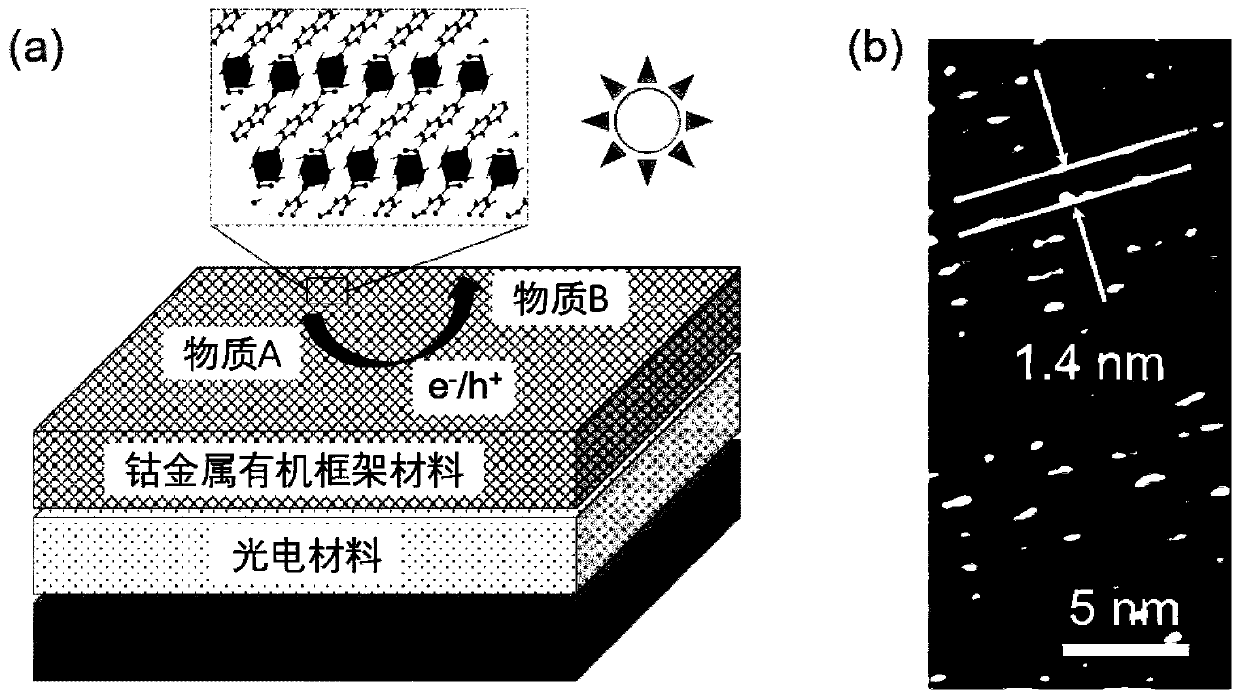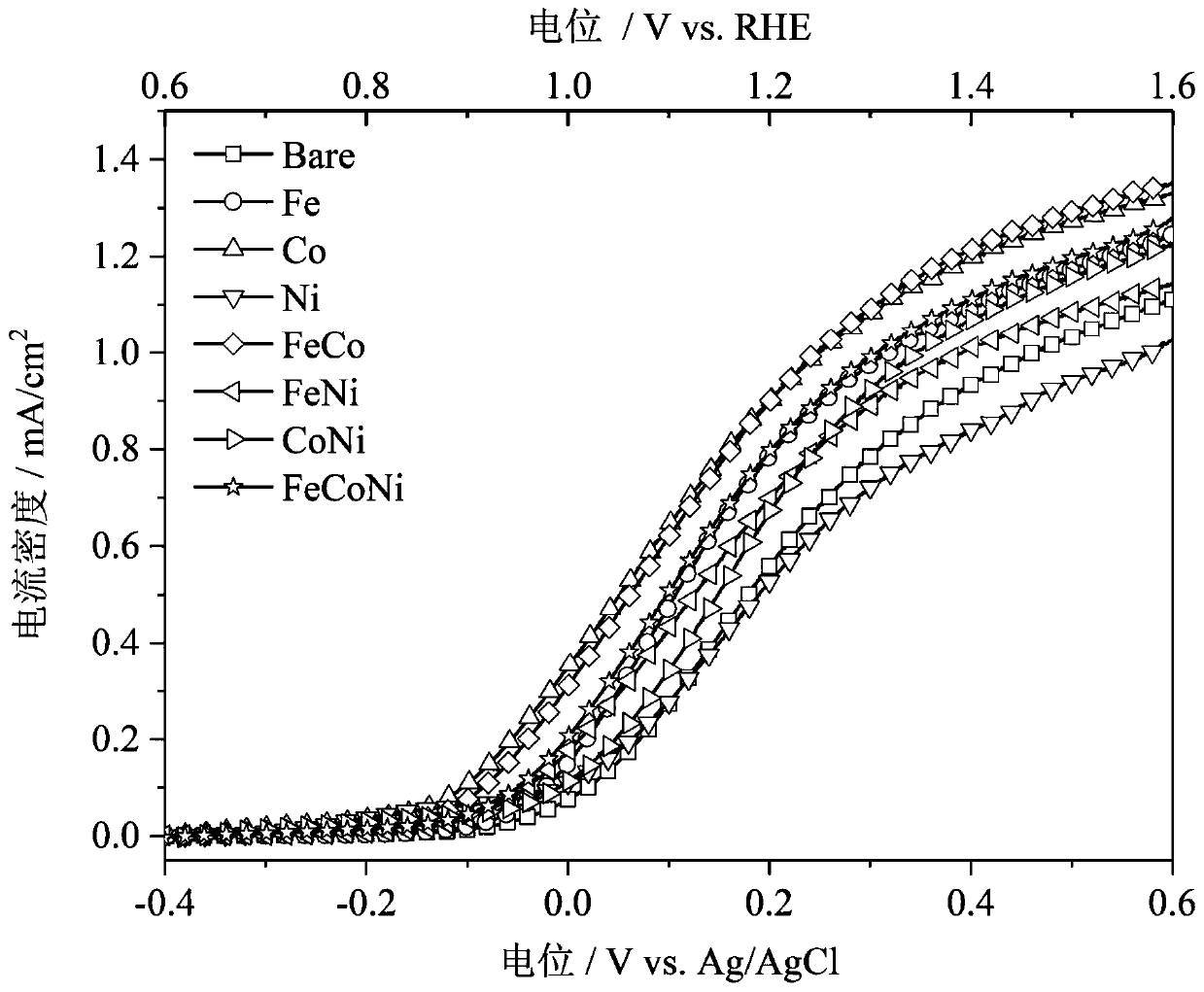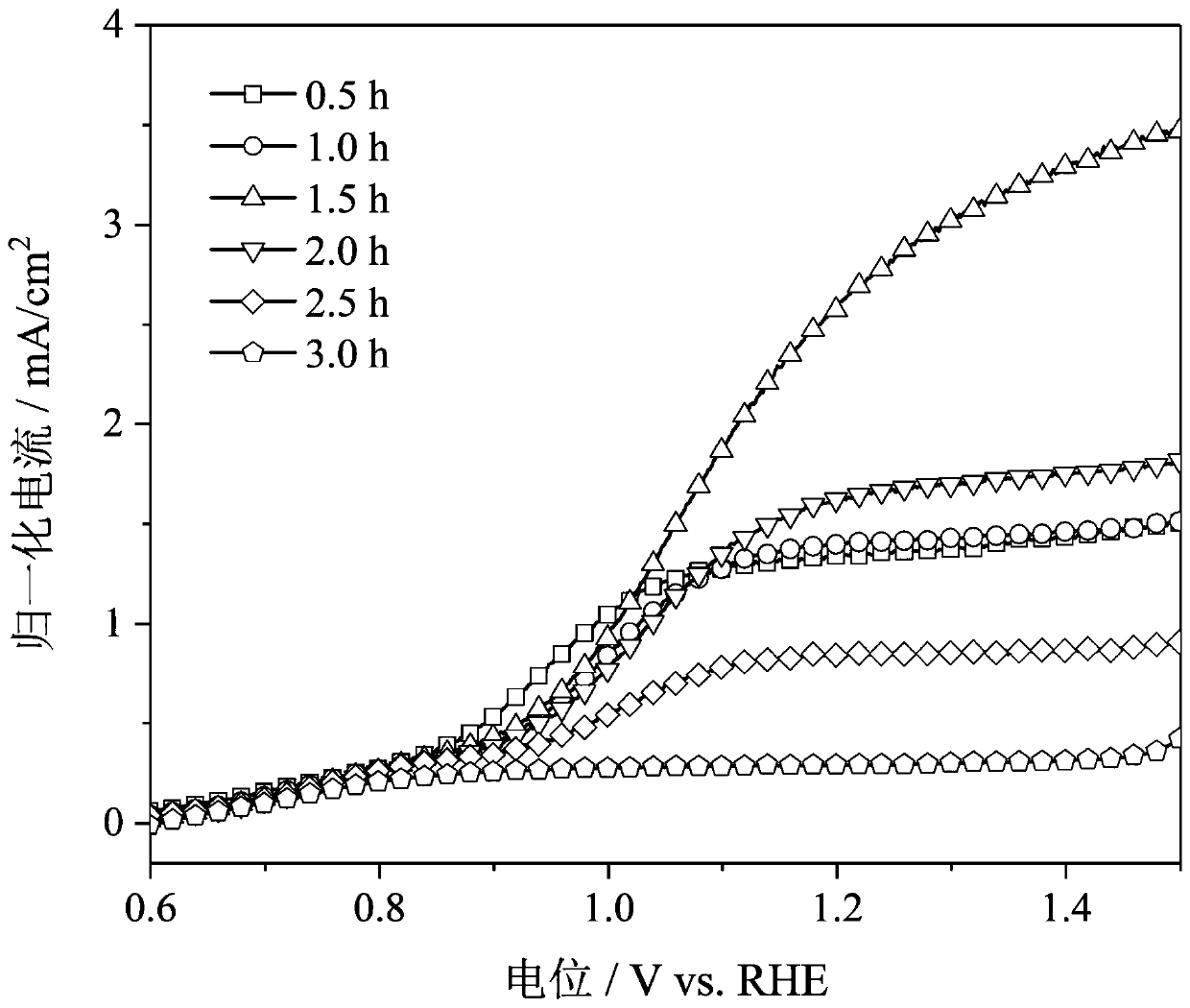Cobalt metal organic framework material, preparation method and applications thereof
A technology of organic framework and cobalt metal, applied in the field of photocatalytic materials, can solve the problems of serious charge recombination on the electrode surface, high overpotential, slow water oxidation kinetics, etc., and achieve stable photocatalytic effect, high process controllability, commercial Apply promising effects
- Summary
- Abstract
- Description
- Claims
- Application Information
AI Technical Summary
Problems solved by technology
Method used
Image
Examples
Embodiment 1
[0033] Example 1: Preparation of photoanodes with cobalt metal organic framework materials with different coverages to modify photoelectric materials, for testing the influence of cobalt metal organic framework materials with different coverages on the modification effect of photoelectric materials.
[0034] (1) Cobalt nitrate hexahydrate and 2,6-naphthalene dicarboxylate dipotassium salt are mixed in a molar ratio of 1:1, both of which are made into six solutions with a concentration of 40mM / L;
[0035] (2) Add six parts of the mixed solution in step (1) to six beakers where conductive glass / titanium-doped hematite has been placed respectively. The size of a single piece of conductive glass is 1cm×2.5cm×1mm, and the volume of the solution is 40mL, then all sealed;
[0036] (3) Heat the reaction solution in step (2) to 60°C at a heating rate of 5°C / min, react at a constant temperature for 0.5h, 1.0h, 1.5h, 2.0h, 2.5h, and 3.0h, and finally cool down to At room temperature, de...
Embodiment 2
[0038] Example 2: Preparation of photoanodes of different optoelectronic materials modified by cobalt metal organic framework materials, used to illustrate the universality of cobalt metal organic framework materials modification.
[0039] (1) Cobalt nitrate hexahydrate and 2,6-naphthalene dicarboxylate dipotassium salt are mixed in a molar ratio of 1:1, both of which are made into three solutions of concentration 40mM / L;
[0040] (2) Add the three mixed solutions in step (1) to three beakers that have placed conductive glass / hematite, conductive glass / titanium dioxide, conductive glass / bismuth vanadate, and the size of a single piece of conductive glass is 1cm ×2.5 cm×1mm, the solution volume is 40mL, and then all are sealed;
[0041](3) The reaction solution in step (2) was heated up to 60°C at a heating rate of 5°C / min, reacted at a constant temperature for 2.0 hours, and finally cooled down to room temperature by natural cooling to obtain different optoelectronic materials...
Embodiment 3
[0043] Example 3: Preparation of cobalt metal organic framework materials from different sources of divalent cobalt ions, used to illustrate the versatility of the precursors of cobalt metal organic framework materials.
[0044] (1) Mix cobalt nitrate, cobalt acetate, cobalt sulfate, cobalt carbonate, and cobalt oxalate with dipotassium 2,6-naphthalene dicarboxylate in a molar ratio of 1:1, and both are formulated into five parts with a concentration of 40mM / L solution;
[0045] (2) The reaction solution in step (1) was heated up to 60°C at a heating rate of 5°C / min, subjected to a constant temperature reaction for 12.0 hours, and finally cooled to room temperature by natural cooling, and centrifuged to obtain a cobalt metal organic framework material.
[0046] (3) Dry the cobalt metal organic framework material obtained in step (2) in an oven at 40°C.
PUM
 Login to View More
Login to View More Abstract
Description
Claims
Application Information
 Login to View More
Login to View More - R&D
- Intellectual Property
- Life Sciences
- Materials
- Tech Scout
- Unparalleled Data Quality
- Higher Quality Content
- 60% Fewer Hallucinations
Browse by: Latest US Patents, China's latest patents, Technical Efficacy Thesaurus, Application Domain, Technology Topic, Popular Technical Reports.
© 2025 PatSnap. All rights reserved.Legal|Privacy policy|Modern Slavery Act Transparency Statement|Sitemap|About US| Contact US: help@patsnap.com



